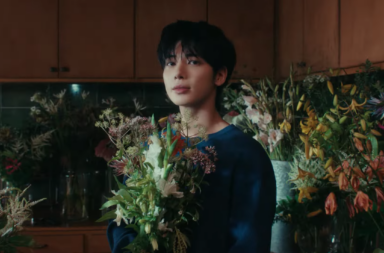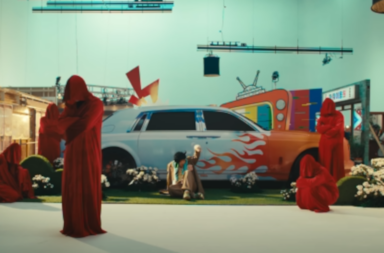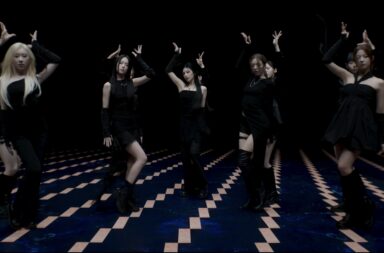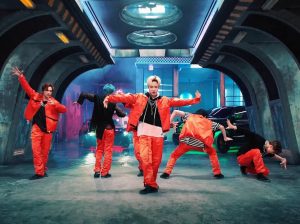
The month started with miraculous news for the fans of NCT Dream. On April 14, SM Entertainment announced that the unit would abolish the much-dreaded graduation system and move forward with its seven original members as a fluid ensemble. This means that Mark, who graduated in 2018, will return to the group in the future, and that the members are now able to partake in other projects and NCT units.
Before any of these changes happen, though, Haechan, Jeno, Jaemin, Renjun, Chenle, and Jisung are back with the mighty “Ridin’”. Loaded with bouncy synths and distorted samples, its urban soundscape is translated into a blazing MV.
The first thing to know about NCT Dream is that they are always on the move. If there’s one constant motif in their releases, it’s transportation. They hoverboard in “Chewing Gum”, race cardboard karts in “My First and Last”, sail a boat in “We Young”, mischievously bike into the night of “Go”, and drive to exquisite landscapes in both “We Go Up” and “Boom”. They embody NCT’s overarching dream concept by conjuring fantastic imagery, while also giving it literal wings to fly — or wheels to ride.
In “Ridin’”, muscle cars and motorcycles are the vehicles of choice. Symbolizing maturity and a slight hint of danger, they add up to the lyrics’ message of exceeding themselves and going beyond limits.
Heat up this moment make it hotter
Burn up the road
Until I surpass myself
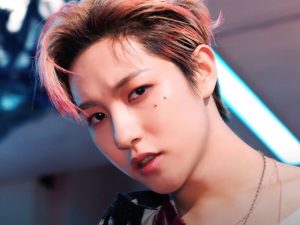
Surpassing themselves also means exceeding the concrete world and its laws and restrictions. Mentions of breaking records, switching lanes, and escaping the rush hour contribute to the frenetic rhythm on which NCT Dream dares to envision limitless power.
However, despite being a release so invested in movement, the narrative of the MV is surprisingly still. For the first time in their history, NCT Dream doesn’t actually ride the vehicles they interact with. Transiting from a gritty alley to a dim garage, and later to a pitch black motorcycle rink, they dance around, draw graffiti, and strike poses, but not once do they turn the engines on.
Using fancy vehicles to add a certain materialistic status in MVs isn’t novelty in K-pop. In 2020, though, they can be seen as a throwback to when this artifice was used more often, especially in SM’s box MVs from the early 2010s. In “Ridin’”, the motorcycles and cars maintain their position as fancy decor, adding prestige and aesthetic value to the group’s concept. The Dreamies aren’t invested in literally going places this time. Instead, they are taking the viewer for a ride. As Clarissa Pinkola Estés says in Women Who Run with the Wolves:
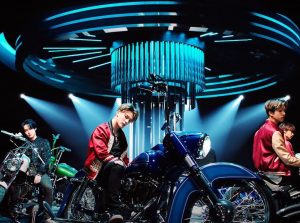
The body, through its states of arousal, awareness, and sensory experiences—such as listening to music, for instance, or hearing a loved one’s voice or smelling a certain fragrance—has the ability to transport us elsewhere.
By stimulating the audience, NCT Dream doesn’t need to go anywhere — their music and their presence are enough to transport the audience to another world. First, there’s a nostalgic 2015’s feel to this release, from the blue and red neon lighting to the catchy chorus and adlibs. Haechan, Chenle, and Renjun’s melodic tones are the perfect complement to Jaemin and Jeno’s raps, while Jisung’s lower register colors their vocal chemistry with uniqueness.
Then, the detailed styling of the members stands out, from Jaemin’s icy blue hair, to Renjun’s rebellious anti-eyebrow piercing, to Haechan’s hair tinsel. Through the use of chains, eyeliner, glitter and contrasting colors, their sleek visuals compose a memorable impression.
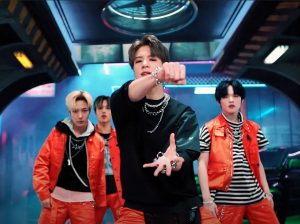
“Ridin’” also reinforces choreography as one of the hallmarks of the NCT brand, and the Dreamies as some of its best dancers. Though the members don’t ride vehicles, they do command the camerawork with their bodies. When Jeno does a turn on an imaginary steering wheel, the screen also shifts, and when the choreography point is a hand-raised fingersnap, the camera goes up for an aerial shot. Dynamic punches flow effortlessly into body rolls, arm movements propel exciting formations, and eye contact is the focal point for most of the video.
And finally, while NCT Dream was originally created to be a youth-focused unit, there is a singular power that comes from growing up in the public eye. The endearment and attachment to idols who develop on screen is relatable to many fans, either because they are also growing, or because they remind them of how it felt to be a teenager. The Dreamies have that card up on their sleeves, and it’s satisfying to see them mature with another release.
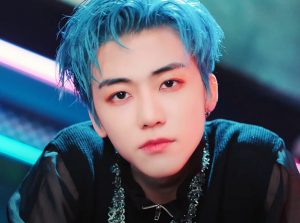
For some, the rebranding from bubblegum cuties to moody rebel gang was abrupt, and perhaps even nonsensical. But isn’t adolescence the same? Before an individual finds its own path, it goes through brutal experimentations, breaks rules, destroys expectations, and then begins to shape an identity through discovering what fits them best.
NCT Dream is setting both feet on that road, and taking the viewer with them. It’s refreshing to see a group unafraid of changing and experimenting, even if the final results may vary. At the end of “Ridin’”, however, there’s a definite taste for wanting more. Here is a group to be trusted in driving us towards an exciting future.
(YouTube. Estés, Clarissa Pinkola. Women Who Run with the Wolves: Myths and Stories of the Wild Woman Archetype. New York: Ballantine Books, 1992. Images and lyrics via SM Entertainment.)
